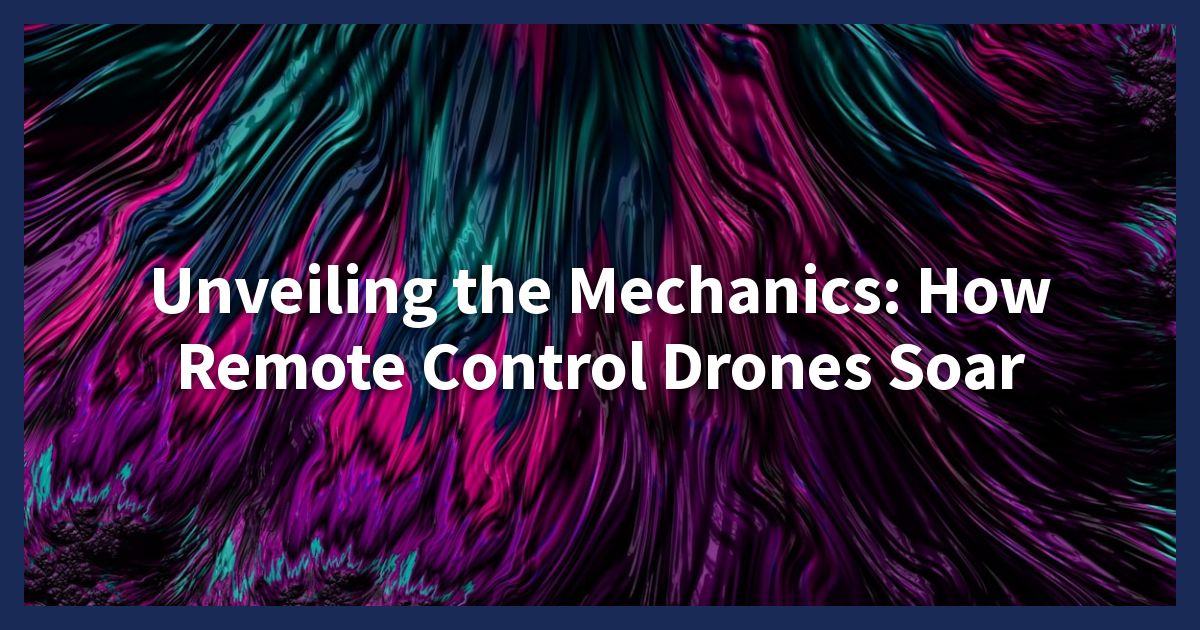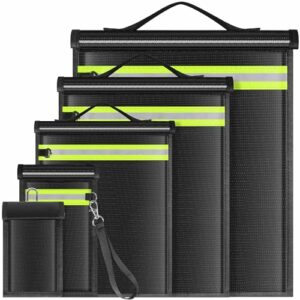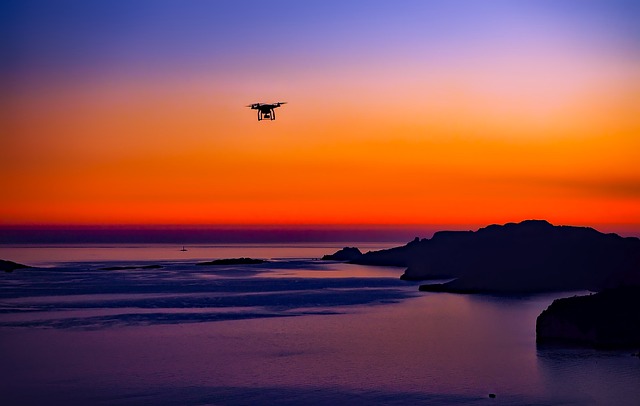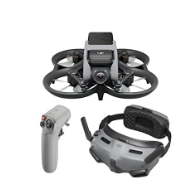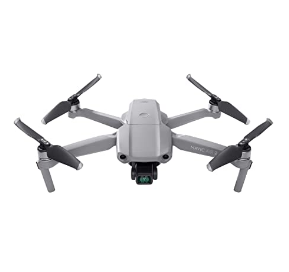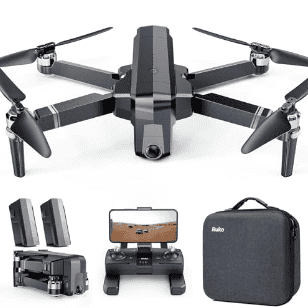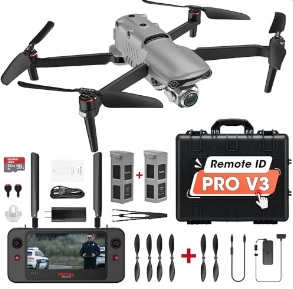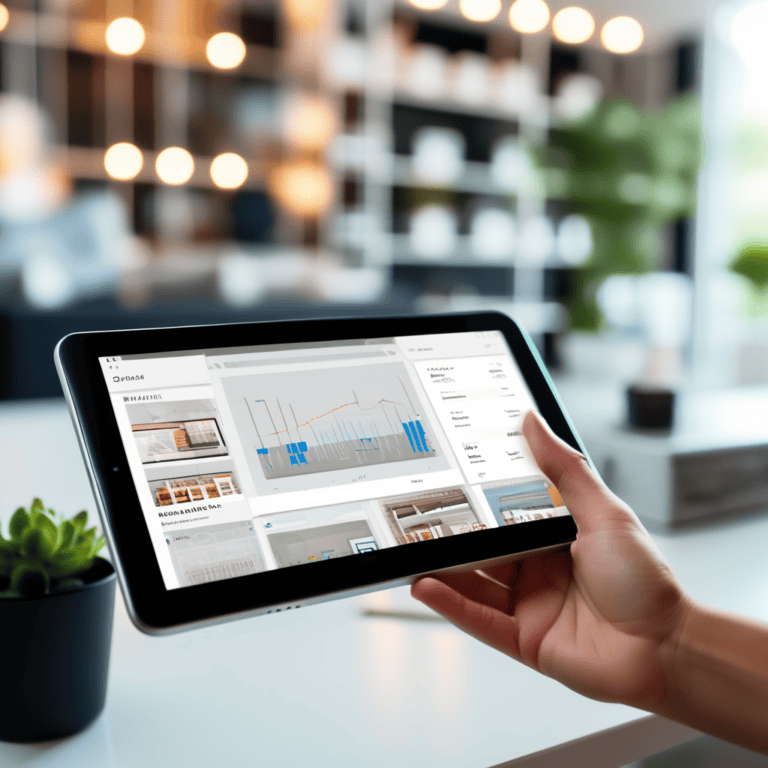Unveiling The Mechanics: How Remote Control Drones Soar
Are you ready to unravel the mysteries behind remote control drones? In a world where technology is constantly evolving, these flying gadgets have become a pivotal part of many enthusiasts’ quests. The allure of flying a drone seamlessly through the skies has thrilled hobbyists and professionals alike.
With the fast-paced advancement in drone technology, understanding how these remote control drones work can be a game-changer. From the basics of drone controllers to the intricate communication between the transmitter and the drone itself, the landscape of drone technology is both exciting and complex.

In this blog post, we will embark on a journey to explore the inner workings of remote control drones. We’ll delve into the realm of flight controllers, ESCs, sensors, and algorithms that make these drones soar through the air with precision. Understanding the fundamentals of how drone controllers function is essential for any drone enthusiast.
Join us as we dissect the technology behind remote control drones, demystifying the process that allows these aerial marvels to take flight. Get ready to unlock the secrets of drone technology and gain a deeper appreciation for the ingenuity that powers these innovative devices.
Key Components of Remote Control Drones
Diving into the technical marvels of remote control drones, it’s essential to grasp the key components that make these soaring machines work seamlessly. Understanding the intricate systems like propellers and motors, flight controllers, and remote control transmitters sheds light on the inner workings of these modern marvels.
Propellers and Motors
Propellers and motors are the powerhouse behind a drone’s flight dynamics. The propellers generate lift, thrust, and control the direction of the drone, while the motors provide the necessary power to drive the propellers. Typically, remote control drones use brushless motors due to their efficiency and reliability, ensuring precise control and longer flight times. The interplay between the propellers and motors is vital for maneuverability and aerial stability.
Flight Controller
The flight controller serves as the brain of the drone, managing stability, navigation, and response to user commands. This vital component integrates gyroscopes, accelerometers, and barometers to maintain balance and orientation in the air. Modern flight controllers leverage advanced algorithms and sensor technology to enhance stability, enabling drones to hover steadily in diverse conditions and execute complex maneuvers with precision.
Remote Control Transmitter
The remote control transmitter acts as the bridge between the user and the drone, allowing wireless communication for piloting and commanding the aircraft. Through radio frequency signals, users can control the drone’s movement, adjust flight parameters, and activate various features. Advanced transmitters offer ergonomic designs, programmable functions, and extended range capabilities, providing users with intuitive control and enhanced flying experiences.
By grasping the roles of propellers and motors, flight controllers, and remote control transmitters, enthusiasts can deepen their understanding of the intricate mechanisms that power remote control drones, shaping the future of aerial technology.
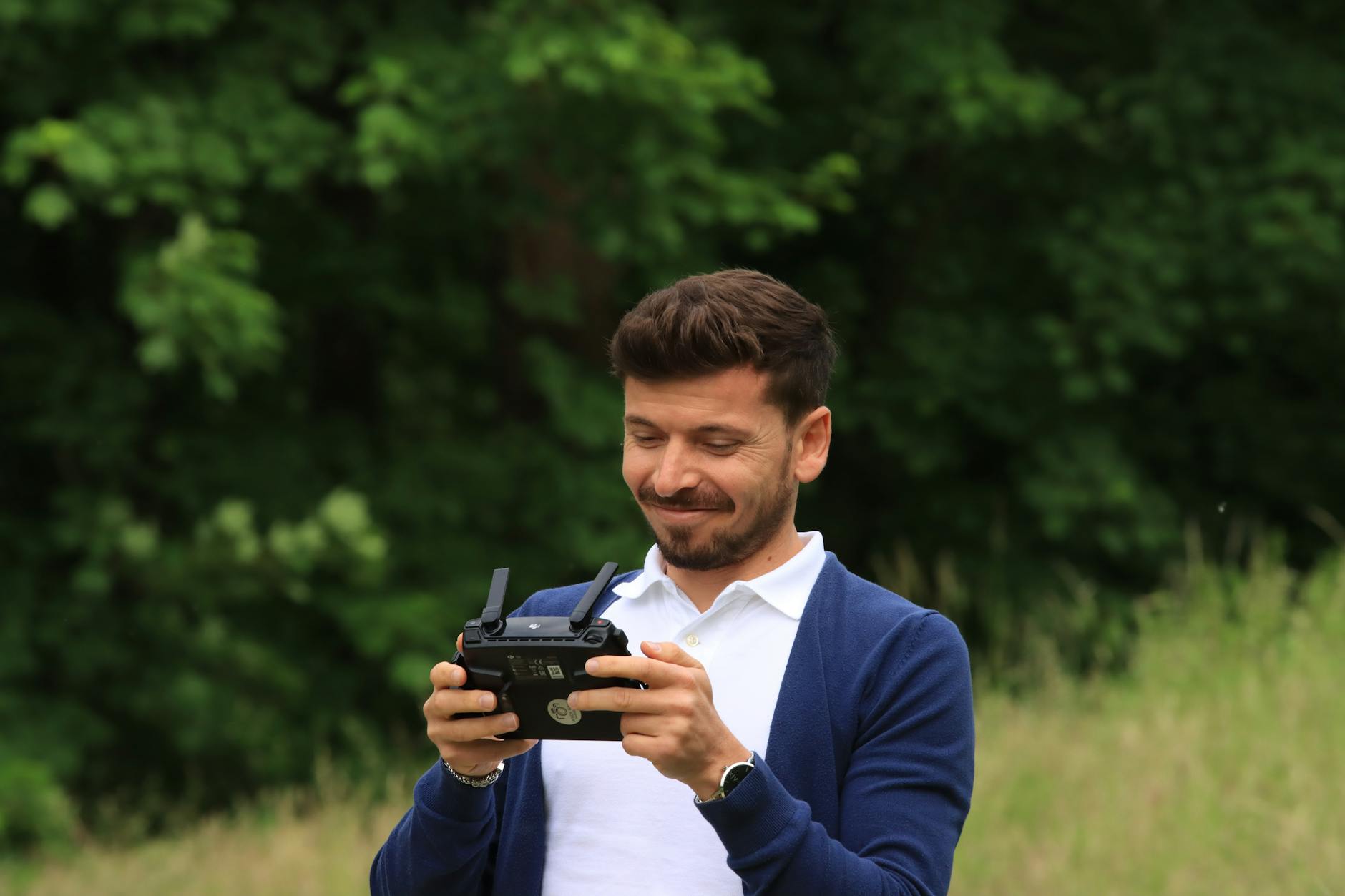 Photo by Efrem Efre
Photo by Efrem Efre
Working Principle of Remote Control Drones
Remote control drones operate based on a fascinating combination of technology and aerodynamics. Let’s delve into how these innovative gadgets take flight and respond to commands.
Takeoff and Landing
When initiating a flight with a remote control drone, the takeoff process is crucial. Ensure you have a clear area free of obstacles before liftoff. Start the propellers by engaging the controls gently. Gradually increase throttle to lift the drone off the ground. Remember, safety is paramount during takeoff to prevent accidents and ensure a smooth flight experience.
Similarly, landing a drone requires finesse. Slowly reduce the throttle to descend gently. Aim for a flat surface and guide the drone down with precision. Implementing safety measures during landing can help prevent damage to the drone and surrounding objects.
Flight Maneuvers
Remote control drones offer a range of exciting flight maneuvers that users can explore. These maneuvers include hovering in place, moving forward or backward, and executing turns in different directions. Each maneuver requires specific control inputs to achieve the desired movement.
To hover in place, maintain a steady throttle and adjust the direction using the controls. For forward or backward flight, tilt the drone’s orientation forward or backward while adjusting the throttle. Turning involves using the directional controls to pivot the drone left or right smoothly.
Mastering these flight maneuvers enhances the overall flying experience and allows for creative aerial exploration. Experiment with different maneuvers to unlock the full potential of your remote control drone.
By understanding the principles behind takeoff, landing, and flight maneuvers, you can confidently navigate your remote control drone through the skies with precision and control.
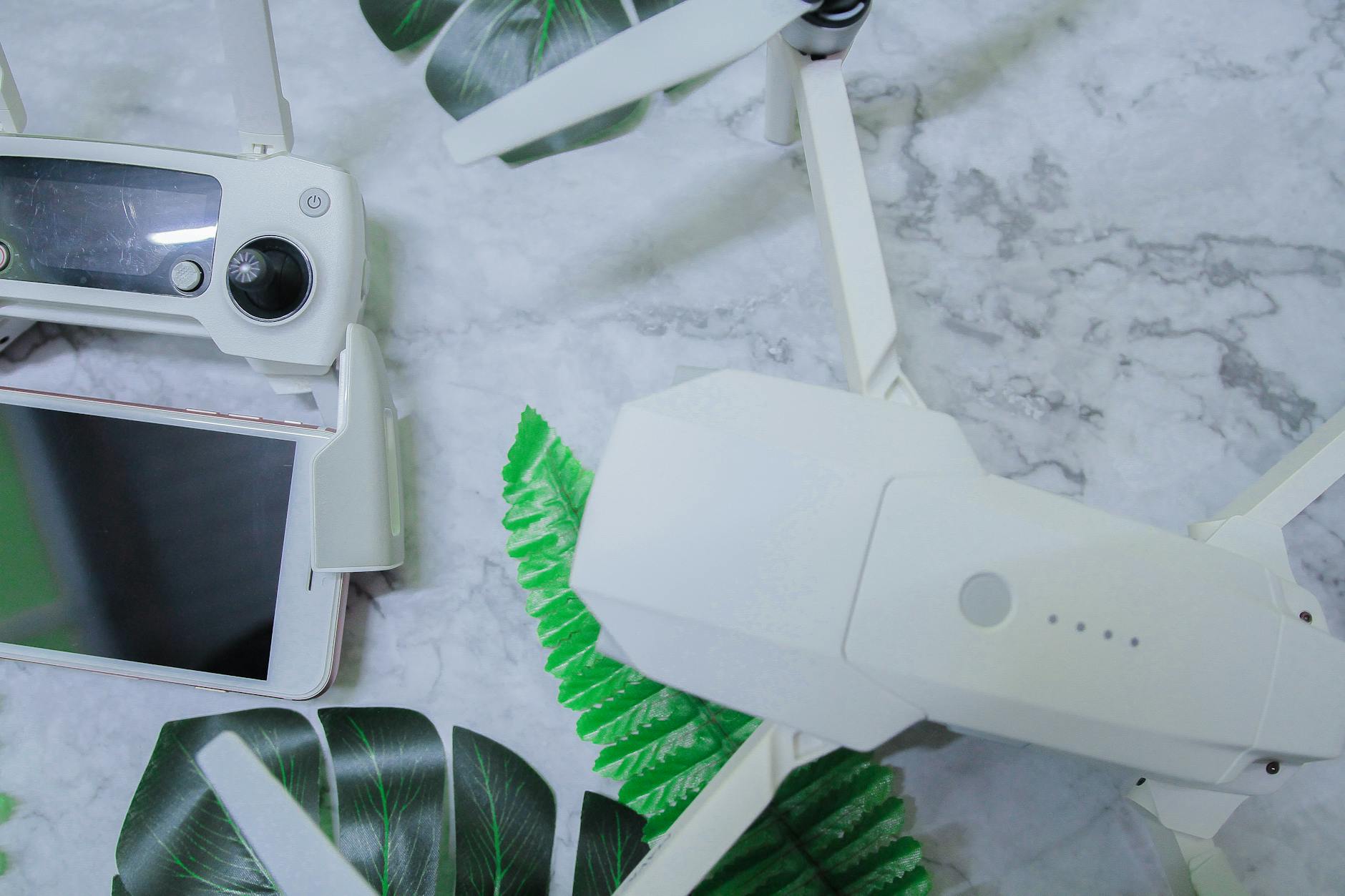 Photo by Pok Rie
Photo by Pok Rie
Technological Advancements in Remote Control Drones
Drones have undergone significant technological advancements that have revolutionized their capabilities, making them indispensable tools for various applications. Let’s explore two key advancements in remote control drones that have shaped their functionalities.
Camera Integration
One of the most notable technological advancements in remote control drones is the seamless integration of high-quality cameras. These integrated cameras open up a world of possibilities, allowing users to capture stunning aerial photographs and videos with ease. Whether it’s capturing breathtaking landscapes or filming action-packed sequences, the camera integration in drones has transformed the fields of aerial photography and videography.
Popular drone models like the DJI Phantom series and the Parrot Anafi are renowned for their exceptional camera capabilities. These drones are equipped with advanced camera systems that offer high-resolution images and smooth video footage, providing users with a professional-grade aerial photography experience.
Remote Control Connectivity
Another crucial aspect of drone technology is remote control connectivity, which determines how users interact with their drones. Remote control drones utilize various connectivity options such as Wi-Fi, radio frequency, and Bluetooth to establish a connection between the remote controller and the drone itself. Each connectivity method has its advantages and limitations, shaping the overall user experience.
Wi-Fi connectivity enables drones to be controlled through smartphone apps, offering convenience and ease of use. Radio frequency provides longer control range, making it ideal for professional drone operations that require extended distances. Bluetooth connectivity, while limited in range, offers a reliable and stable connection for close-range drone control.
Understanding the different connectivity options empowers drone enthusiasts to choose the right remote control drone that aligns with their specific needs and preferences.
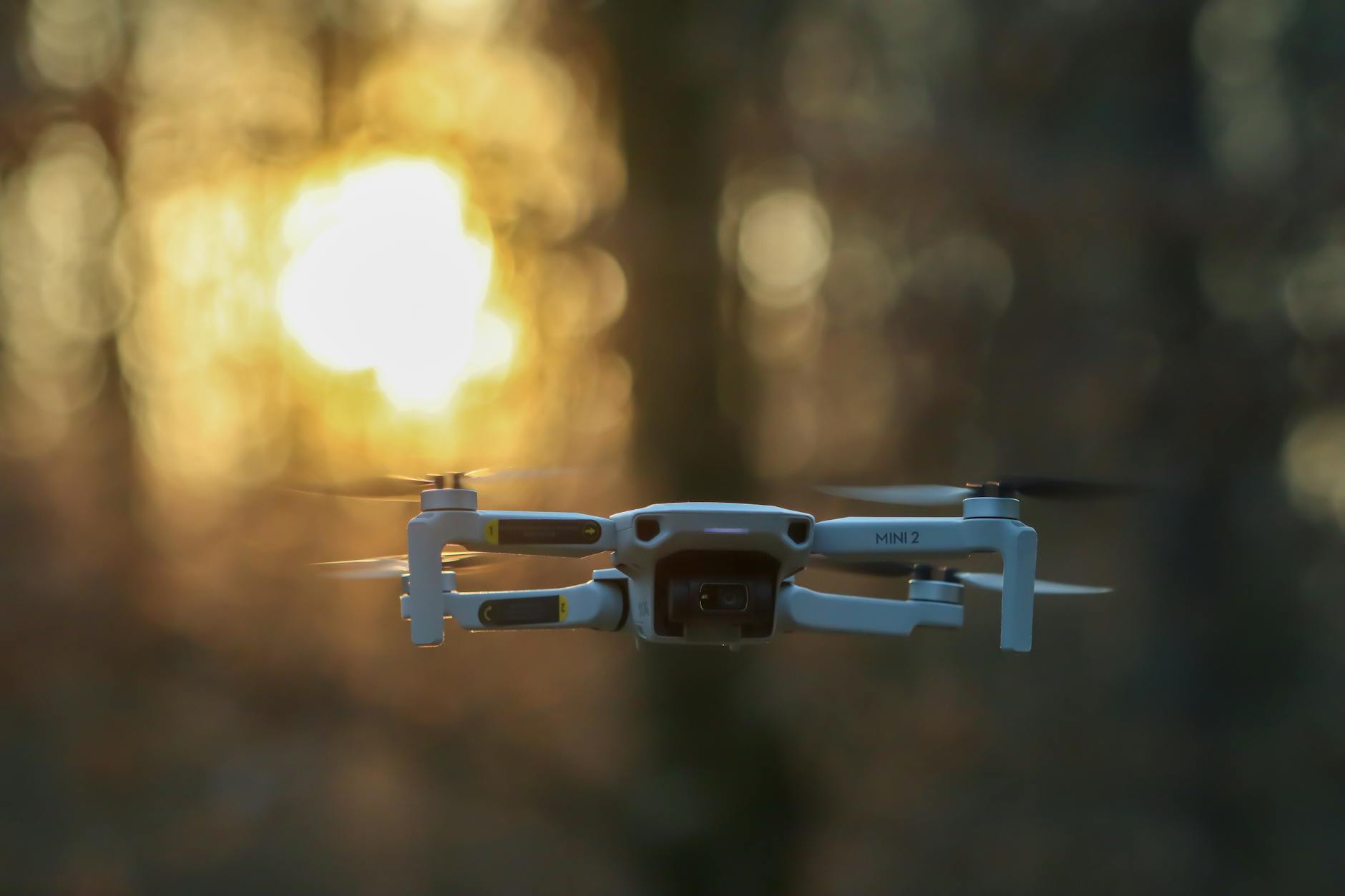 Photo by Nikola Tomašić
Photo by Nikola Tomašić
Choosing the Right Remote Control Drone
Drones have become increasingly popular for various purposes, from recreational flying to professional photography. When selecting the right remote control drone, several factors need to be considered to ensure a fulfilling and safe flying experience.
Drones Available on Amazon
When exploring options for remote control drones,
| Product Image | Product Name / Primary Rating / Price | Primary Button |
|---|---|---|
|
||
|
||
|
||
|
Safety Considerations
Operating a remote control drone requires responsible piloting to ensure the safety of individuals and property. Understanding safety considerations is crucial before taking flight. It is essential to abide by airspace regulations set by aviation authorities to prevent accidents and maintain a safe environment for all users. Regular maintenance of the drone, including checking batteries and propellers, is vital to avoid malfunctions during flight. Additionally, being prepared with emergency procedures in case of unexpected situations is necessary for safe drone operation.
When piloting a drone, always prioritize safety by following guidelines and precautions to prevent accidents and promote responsible drone flying practices.
Remember, choosing the right remote control drone and prioritizing safety measures are key elements in enjoying the thrill of drone flying responsibly.
Conclusion
Understanding how remote control drones work is not just about the technical details; it unveils a world of endless possibilities and excitement. By breaking down the technology behind remote control drones, we gain a deeper appreciation for the innovation and skill that goes into their design and operation.
Exploring the realm of remote control drones with this newfound knowledge allows us to engage in this fast-paced, evolving industry with confidence and curiosity. Whether you’re a beginner or a seasoned enthusiast, delving into the mechanics of these drones can truly enhance your experience and open up new horizons in the world of aerial technology.
So, embark on your drone journey with a fresh perspective, knowing that the understanding of how these devices work not only adds to your enjoyment but also enables you to make informed decisions and possibly even contribute to the ever-growing landscape of drone technology. Let your exploration of remote control drones be guided by curiosity and a passion for innovation.
Latest Post
- What Is a Faraday Bag? Why Every Prepper Needs One
- Best Budget Laptops for College Students (2025) | Under $400
- What Is A Faraday Bag?
- TOZO PB3 Portable Charger: Lightweight Power For Your Devices
- Unlock Passive Income With The Cell Phone Cash Program
- JavaBurn: Does It Live Up To The Hype?

